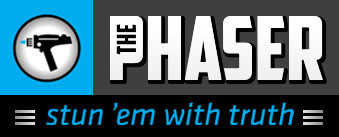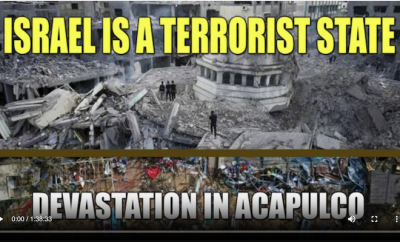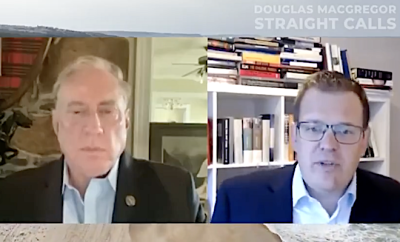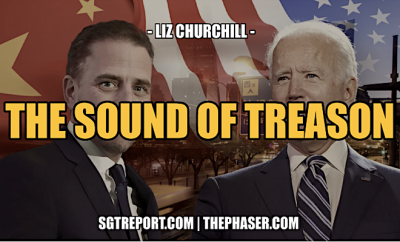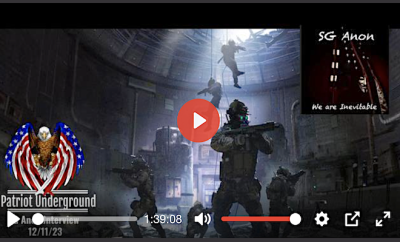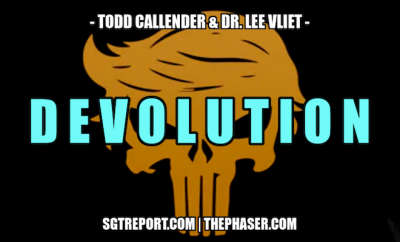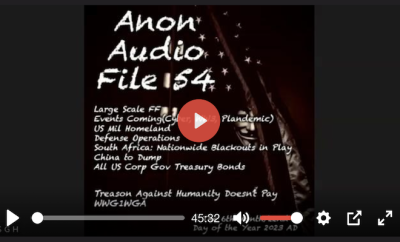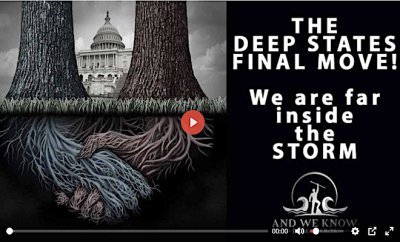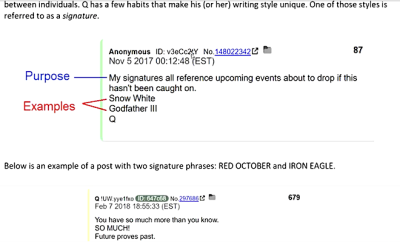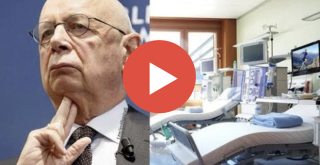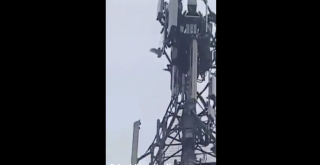 The Saker.is
The Saker.is
Featured
“Johanna Granville’s Presentation ‘Maidan and Beyond: The Media Blackout in Ukraine’”
by James L. Coffin, Ph.D., via The Saker.is:
The lack of any real debate in the Western media on Ukraine has irked me ever since the protests on Kiev’s Independence Square or Maidan Nezalezhnosti broke out in November 2013. The anti-Russian bias is so prevalent that perhaps average readers no longer detect it. In this post I would like to report on a very interesting presentation I heard and the disturbingly biased coverage of it in a Bulgarian student newspaper, which points to an alarming lack of critical thinking skills in today’s young adult population.
Given the deafening drumbeat of condemnation of Russia, and specifically Putin, I found Johanna Granville’s multimedia presentations on November 10 (“Ukraine: Another Yugoslavia?”) and especially November 19 (“Beyond Maidan: The Media Blackout in Ukraine”) at the American University in Bulgaria (AUBG) both refreshing and informative. While much of the information is already familiar to members of the Vineyard of the Saker community, the presentation invites analysis of the negative trend of repeated false flags in 2014 ever since the “Euromaidan revolution,” which so many uninformed citizens gullibly championed.
Granville is the author of numerous scholarly articles, a book (The First Domino: International Decision Making During the Hungarian Crisis of 1956), and is the winner of two Fulbright lectureships in Russia and Hungary (see her website here: http://www.johannagranville.com/). She was conducting research in Ukraine for her second book when the Maidan revolts began. After delighting the audience on November 19 with a three-minute introduction in Bulgarian, paying tribute to AUBG founding father John Dimitri Panitza, Dr. Granville noted the decline in press freedom around the world today. According to the Reporters Without Borders’ press freedom index for 2014, the United States ranks 46th, Ukraine 127th, and the Russian Federation 148th. (She cautioned that the Reporters Without Borders organization is itself supported by the U.S.-funded National Endowment for Democracy). All too often “freedom of information is sacrificed in the name of national security,” she stated. “If you get nothing else out of my presentation, remember this: we must not swallow uncritically anything we read in any one country’s newspapers,” she said. “To get the truth these days, a thinking person must dig for real facts and evidence.” Dr. Granville, who was AUBG’s first Panitza Memorial Professor of Communist Studies, selected three events in 2014 by which to illustrate the Ukrainian media’s biased coverage: the snipers’ killings at Kiev’s Maidan (February 20), the Odessa massacre (May 2), and the shootdown of the Malaysian airline (July 17).
Hired to teach “East European History in the Twentieth Century,” which covered the period of Soviet communist domination over the “satellite” countries, Granville cannot be described as a Russophile. She is simply a diligent, impartial researcher. She prefaced her remarks by stating that her essay was exploratory and intended to encourage debate. Her sources included independently funded blogs by investigative journalists and analysts not subject to government or corporate censorship (like Vineyard of the Saker). When citing from the Russian press, she corroborated her findings with other independent sources.
Snipers’ Massacre on Maidan
We have heard it repeatedly: that former Ukrainian president Viktor Yanukovych ordered Berkut anti-riot police to open fire on unarmed protesters, and that “Russian agents” participated in the killings. In his speech to the U.S. Congress on September 18, 2014, current Ukrainian president Petro Poroshenko repeated this line, adding that the overthrow of the Yanukovych government resulted from mass peaceful protests against police violence. Granville presented some arguments that make me question this standard version.
First, take the Kiev regime’s cover-up and use of scapegoats. All recordings of live TV and internet broadcasts of the snipers’ massacre have been erased from Ukrainian websites. The results of ballistic, weapons, and medical examinations were declared classified. Even trees on Maidan with bullet holes were cut down. In her Power Point presentation, Granville showed photos of Dmytro Sadovnyk, the Berkut commander whom the Ukrainian Prosecutor General accused of killing 39 protesters at Maidan on February 20. There’s just one problem: Sadovnyk can’t shoot a gun very well. His right hand was blown off by a grenade six years earlier.
“Evidence suggests that the snipers were in fact from the Maidan opposition and/or from a third party of professional snipers, and that they shot at both unarmed protesters and policemen,” Granville attested. She drew upon published interviews, time-stamped live videos, and the meticulous research of Dr. Ivan Katchanovski of the University of Ottawa, who examined 30 gigabytes of intercepted radio exchanges of the Alfa and Omega units of the Ukrainian Security Service, the Berkut riot police, and anti-government protesters during the entire Maidan uprising.
One interview she cited was that of the former chief of Ukraine’s Security Service Aleksandr Yakimenko, published on March 13, 2014. According to Yakimenko, shooters were spotted in at least twelve buildings around the square that were forcibly occupied by the Maidan opposition, but Maidan “Commandant” Andriy Parubiy refused to allow Yakimenko’s armed men from entering the square. (Parubiy later became Secretary of the National Security and Defense Council of Ukraine until early August 2014. He is co-founder – with Oleh Tyahnybok – of the ultra right-wing Svoboda Party.)
Granville also cited the April 2, 2014 interview by Yanukovych, in which he denied ever ordering the Berkut police to shoot unarmed Ukrainian citizens. Furthermore, at a May 13 press conference, according to Granville, Ukrainian parliamentary investigation head Gennady Moskal stated that the bullets that killed both unarmed protesters and Berkut police in Kiev on February 20 did not match any of the firearms issued to Berkut’s special unit. This is interesting, when coupled with the testimony of Dr. Olha Bohomolets, who averred that the same type of bullets were extracted from the wounds in both protesters and police. Dr. Bohomolets performed emergency operations at the triage center during the Maidan shootings. Her testimony was alluded to in the famous leaked phone call between Estonian Foreign Minister Urmas Paet and the EU foreign affairs chief Catherine Ashton on February 25. Gennady Moskal predicted decades of debate on this mystery of the snipers, since several key documents were destroyed.
Granville pointed out other evidence typically ignored by the Ukrainian media. This included videos showing members of the paramilitary group Right Sector leaving the Hotel Dnipro with large cases, which they called “musical instruments.” It also included radio intercepts of Maidan opposition fighters, positioning themselves on top floors in occupied buildings around the square. She played excerpts from these recordings, whereby the audience could hear Maidan protesters calling for access to open windows and referring to the Berkut in the third person. Their cameramen and shooters were apparently working together. Their words were audible in Russian at 0.22 in this video: “You must show how the people are being shot and how they fall to the ground.” Some of the photos of armed Berkut police may be misleading, Granville argues. In some cases, according to live videos, they are shooting at the dirt in front of unarmed protesters in order to get them to retreat. The videos show dirt sprays, not bodies falling to the ground. See here at 13:09–14:13.
As many as ten unarmed Berkut policemen were fatally shot earlier on February 18, which prompted the government’s decision to bring in armed security forces. That allowed later killings realistically to be blamed solely on the Berkut police. Granville posed the question: Would Berkut police have shot at their own fellow officers? At least thirteen Berkut police died and 189 were wounded by gun shots. Curiously, no one has been arrested for shooting the policemen. Ironically, Maidan opposition leaders sought to appoint Andriy Parubiy to head the investigation of snipers’ attacks, the same man who apparently prevented Yakimenko’s men from entering the square to eliminate the snipers from the surrounding buildings.
Odessa Massacre
Three months after Maidan, on May 2, another tragic loss of life occurred, this time in Odessa, a key port city all the more valued after Russia’s annexation of Crimea in March. “Citizens in Odessa call it the ‘Odessa Massacre’ or the ‘Odessa Genocide,’ but the Ukrainian media typically refers to it as the ‘Odessa arson case,’” Granville said. The official version of this event in the Ukrainian media goes something like this. On May 2 several thousand young Ukrainians gathered to watch a soccer game, Chornomorets Odessa vs. Metalist Kharkiv. A traditional march for a “United Ukraine” was planned, with the opposing teams marching together. Before the march, “some 400 pro-Russian protesters” were “armed with guns, bats and sticks and wore bulletproof vests and helmets”, while most of the “Ukrainian patriots” were unarmed. These “armed pro-Russian separatists” shot into the crowd of ultranationalist football fans, killing at least one. The crowd of young, pro-Kiev football fans and Right Sector members then rushed over to Kulikovo Field. There they set fire to the tents in front of the Trade Unions building, where allegedly “radical” “heavily armed” pro-Russian “separatists” were camping out. Warned that these pro-Kiev radicals were coming to attack them, these protesters barricaded themselves in the large Trade Unions Building. “Russian citizens” disguised themselves as separatists and provoked the crowd. Official reports state that about forty-six died of asphyxiation. In differing later accounts, six died of falls from windows and as many as thirty-two from chloroform gas. The building, they state, was set on fire by the pro-Russian rebels themselves. In an unfortunate case of “accidental self-immolation,” these rebels hurled a Molotov cocktail at a closed window, which then ricocheted back into the room and ignited.
Other versions state that it is not known how the building caught on fire. “The Ukrainian Interior Ministry stated that 172 people were arrested after the tragedy, and that the majority of detainees were identified as Russian nationals and residents of Transnistria,” Granville said. “Never before has such a gruesome event been so amply videotaped.”
Testimonies of survivors and eyewitnesses, plus unedited videos by local Odessa citizens paint an entirely different picture of this event. The individuals trapped in the burning building were in fact all local Odessa citizens, Granville noted. Videos actually show Right Sector radicals removing passports and wallets from corpses after the fire. (See here at 46:06). This enabled authorities to claim later that the deceased were Russian citizens. Survivors state that perhaps as many as one hundred and sixteen people were trapped in the building’s basement, and that they died not exclusively from asphyxiation, falls, or burns, but also from gunshots and dismemberment by axes. One woman had been raped, and another pregnant woman strangled. The victims were unarmed (see here at 46:17), and included women, children, elderly men, and World War Two veterans. Several videos clearly depict Right Sector girls preparing Molotov cocktails and pro-Kiev radicals hurling the cocktails from without the building.
They show young men on the roof, throwing the first cocktails at the tents well before the football fans had even arrived at Kulikovo field. Still other videos show the radicals entering the building even before the pro-Russian protesters took refuge there, which would explain Molotov cocktails igniting from within the building. Even more mysterious is the footage of allegedly pro-Russian radicals and Odessa policemen wearing red armbands. (See here at 3:07). Granville showed photos of the Odessa deputy police chief, colonel Dmitry Fucheji, conferring with one red armbanded protester. The first Molotov cocktail hurlers atop the Trade Unions building were also wearing the red armbands, as was a young radical filmed shooting into the crowd of football fans in the center of town before the fire was set at Kulikovo field. (See here at 2:51 and here at 1:41:18-1:42:08).
Live videos place Andriy Parubiy in Odessa on April 30 and May 1, two days before the massacre. (Recall that Parubiy is reportedly the man who barred Yakimenko’s armed men from entering Maidan to eliminate the snipers and who was later appointed Secretary of the National Security and Defense Council). He is seen distributing bullet-proof vests to the pro-Kiev militants, including the 33-year-old Maidan Self-Defense activist and later captain of the Interior Ministry’s “Storm Battalion”, Mykola Volkov. Granville showed video stills of the porcine Volkov shooting into the Trade Unions Building and mentioned that Ukrainian police since 2012 have sought to arrest Volkov for fraud. (See here at 1:15-1:28.)
As with the snipers’ massacre, Granville identified in the Odessa case classic signs of a cover-up. First, authorities were quick to blame Russia before any investigation was conducted. Prime Minister Yatseniuk visited Odessa the following day, May 3, and told reporters, “We are at war with Russia,” and that this was “a well-planned Russian terrorist plot.” Second, although a parliamentary investigatory commission was appointed, key public figures refused to testify, including Parubyi, chief of Ukraine’s Security Council Valentin Nalivaichenko, and Interior Minister Arsen Avakov. Third, the commission’s report cut out, among other things, the roles of the Odessa region’s governor Vladimir Nemirovsky and Andrei Yusov, head of the Odessa branch of the heavyweight boxing champion Vitali Klitschko’s “Udar” party. Witnesses had testified that Nemirovsky had bussed in about 500 Right Sector members from Lviv in western Ukraine, and that Yusov instigated the pro-Kiev nationalists to burn the tents in front of the Trade Union building. The published version of the commission’s report was so doctored that parliament member Svetlana Fabrikant, the secretary of the commission, later withdrew her signature. Granville points out that if the Odessa Massacre – which resulted in the deaths of at least 48 pro-Russian protesters – really was a “Russian terrorist plot,” presumably the Ukrainian officials would want to cooperate in the investigation. She concluded that, “rather than being a ‘well-planned Russian terrorist plot,’ the Odessa Massacre was probably a deliberate provocation: pro-Kiev militants posing as pro-Russians and deliberately shooting at their own, to incite the mob and turn them on the real pro-Russian demonstrators at Kulikovo Field.”
